Full Load Current of Generator: A Comprehensive Guide
Generators play a crucial role in providing electrical power in various settings, from industrial plants to residential homes. To ensure their efficient and safe operation, understanding concepts like full load current is essential. In this article, we'll delve into the full load current of generators, its significance, and how to calculate it, using practical examples and formulas.
What is Full Load Current?
Full load current refers to the maximum current that a generator can deliver continuously at its rated voltage. It signifies the maximum load the generator can handle without overheating or causing damage to its components. Knowing the full load current is vital for sizing electrical conductors, protective devices, and ensuring the generator operates within its safe limits.
Calculate the full load current of a generator online
Generator Full Load Current Calculator
Enter the rated power and rated voltage of the generator:
Formula for Calculating Full Load Current
The formula to calculate full load current of a generator is straightforward, involving the generator's rated power (in watts or kilowatts) and its rated voltage (in volts). The formula is as follows:

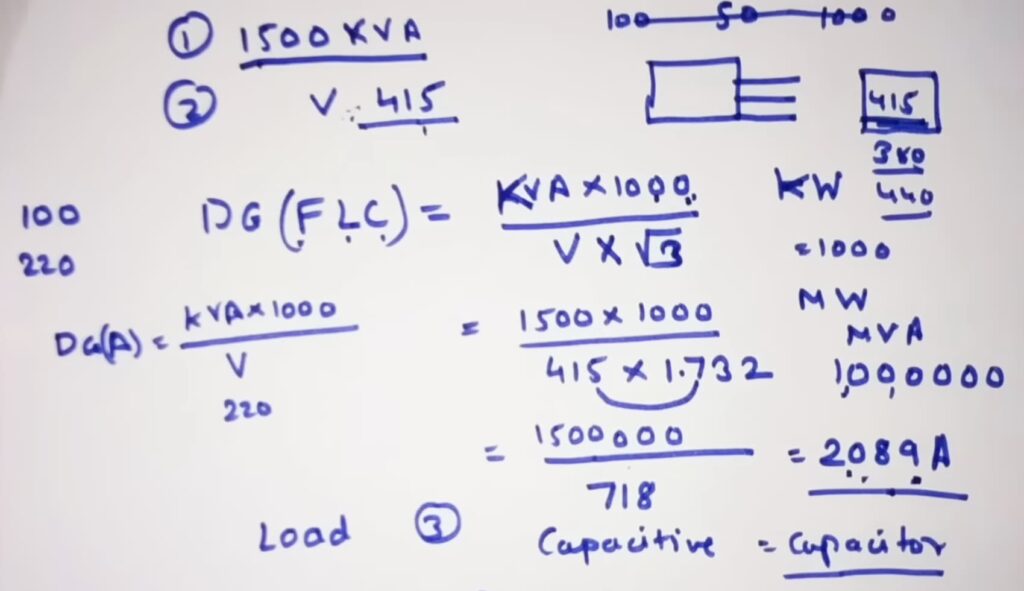
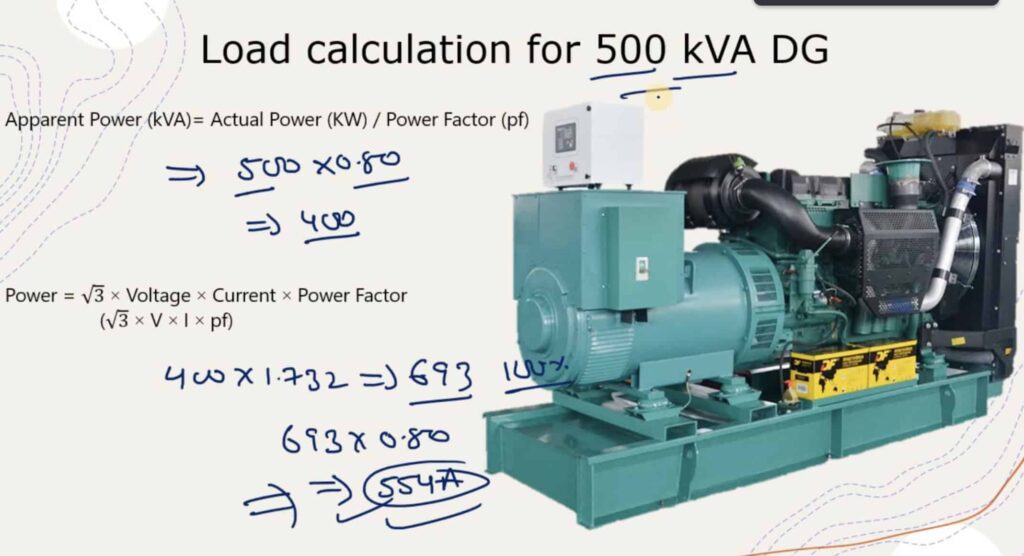
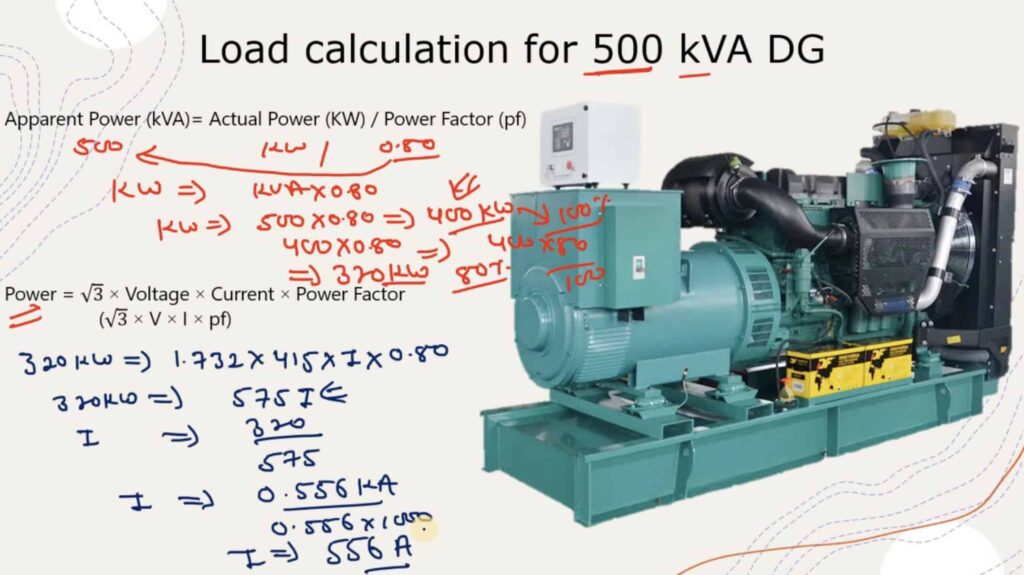
Understanding the Application
In real-world scenarios, knowing the full load current helps in several practical applications. For instance:
Sizing Conductors: Electrical conductors connecting the generator to loads must be sized to handle the full load current without overheating. Oversized conductors lead to unnecessary costs, while undersized conductors pose safety risks due to overheating.
Protective Device Selection: Circuit breakers and fuses protecting the generator and connected loads must be rated to handle the full load current. Choosing the correct protective devices ensures the system's safety and reliability.
Generator Selection: When selecting a generator for a specific application, understanding the full load current requirement is crucial. Oversizing or undersizing the generator can lead to inefficiencies, increased operating costs, or insufficient power supply.
Load Management: Knowledge of the full load current helps in managing loads efficiently. By balancing the load across multiple generators or shedding non-essential loads during peak demand, operators can optimize generator performance and prolong equipment lifespan.
System Reliability: Operating the generator within its rated capacity ensures long-term reliability. Exceeding the full load current frequently can lead to premature wear and tear, reducing the generator's lifespan and increasing maintenance costs.
KVA Amps chart
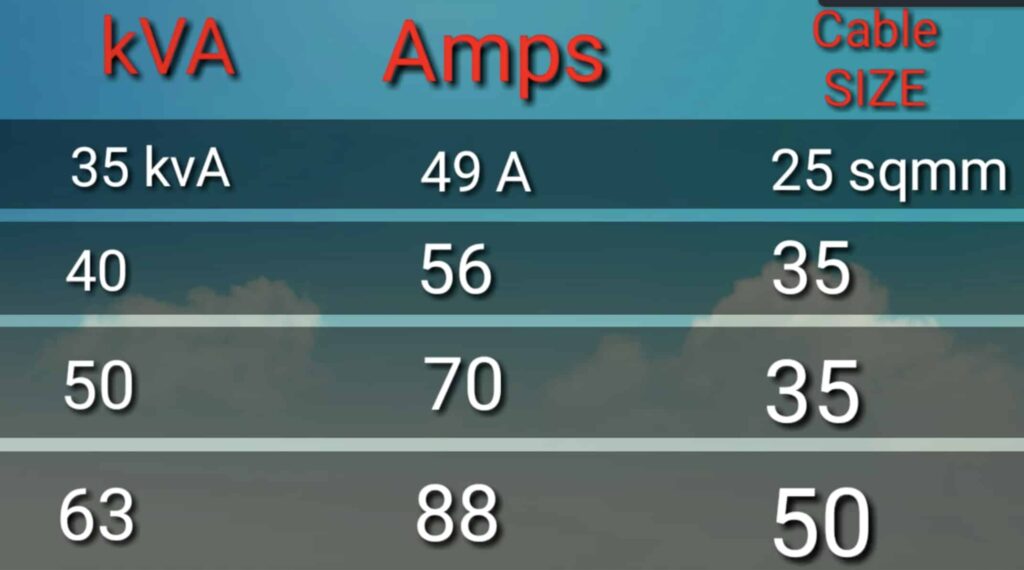

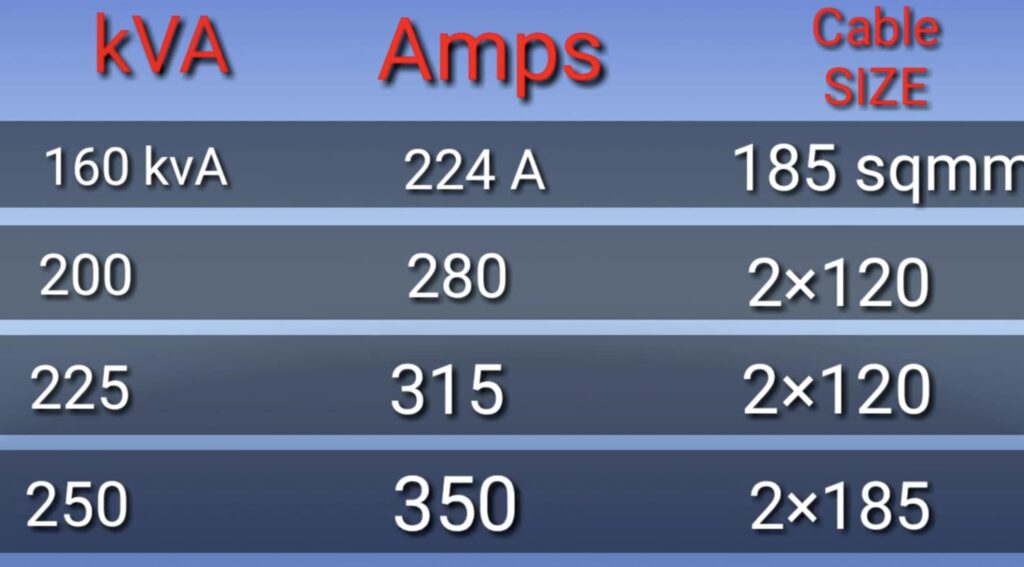
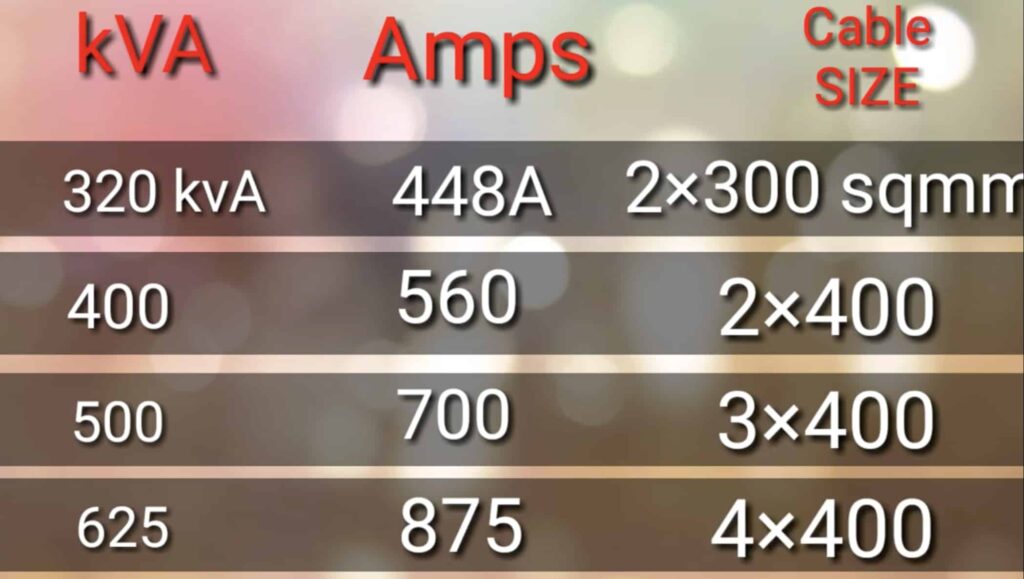
Conclusion
In conclusion, understanding the concept of full load current is essential for anyone working with generators. By knowing how to calculate it and applying this knowledge in various practical scenarios, operators can ensure the safe and efficient operation of generators, contributing to overall system reliability and performance.


